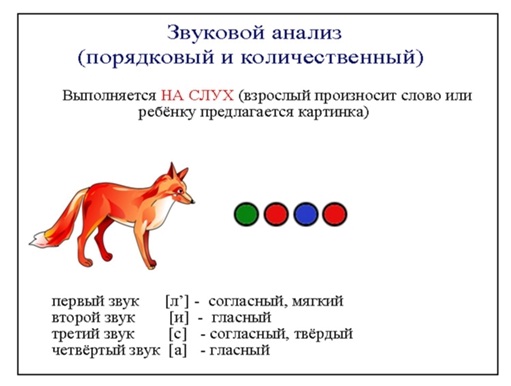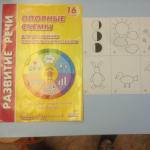Sound and sound-letter analysis - what is it?
spelling with orthoepy
1st part. Sound analysis.
In the literacy notebook, I will post examples, tasks of sound and sound-letter analysis, which we perform with children in literary reading lessons, in Russian language lessons.
Why do sound, sound-letter analysis? From the first literacy lessons, it is necessary to train the child to read words, first spelling (i.e., how it is written), and then read the same orthoepic (i.e., how we pronounce this word in oral speech). The sooner we collide spelling with orthoepy, the better the results will be, both in correct reading and spelling.
Omissions of letters, their replacement, distortion of words, errors in spelling words with orthograms - all these are the results of poor work on the sound-letter analysis of the word. In the Primer, from the first literacy lessons, we simultaneously analyze both the sound and the letter model (scheme) of the word. Mastering the sound analysis of a word, students consistently master a number of skills: to distinguish sounds by intonation, to divide a word into syllables, to distinguish vowels from consonants, to find a stressed syllable in a word, to determine the sonority / deafness and hardness / softness of consonants.
Analyze! Compare! Make a conclusion! Constantly draw the children's attention to words whose spelling is at odds with the pronunciation (she, it, they).
Make sure that when pronouncing sounds, children do not “pull” them (“me”, “ve”), but pronounce clearly and briefly [m], [v] - a sound like a click.
Remember: all types of sound analysis are performed by ear!!! Below you will find reminders on how to correctly design different types of sound analysis. First of all, let's define how the sounds are designated. Let me remind you that sounds are what we hear and pronounce. We see and write letters. Letters are used to represent sound.
For sound analysis, special symbols of sounds are used - colored circles or squares (you can draw them or lay out special chips from any material, the main thing is to observe the color).
Positional Analysis
We determine where the sound is heard: at the beginning of the word, in the middle or at the end. The beginning of a word is the first sound, the word begins with it. The end of a word is the last sound. The middle of a word is neither the first nor the last. In order to hear where the sound is, pronounce the word, highlighting the exaggerated sound we need. For example, we determine where the sound [a] is located in the word "stork". We pronounce it like this: a-a-a-a-stork (a sound at the beginning of a word). Or the sound [a] in the word "ball". We say: sha-a-a-a-arik (a sound in the middle of a word.)

Sound analysis of the word (quantitative and ordinal)
This type of analysis is also performed by ear. The bottom line is to determine the sequence of sounds in a word: which sound is the first, which comes after it, etc. We draw up a diagram (or draw), where each sound is indicated by a certain color: vowels - in red, hard consonants - in blue, soft consonants - in green. As a result, the child must draw up a diagram, name all the sounds in sequence, give each characteristic, determine how many sounds there are. Based on the scheme, selectively name sounds, for example, name the third sound, name the fifth sound.
Example: we perform a sound analysis of the word "fox" (we select each sound in sequence in order to hear it more clearly).
We select the first sound: L-L-L-FOX. The first sound [L "] is a consonant, soft. Denoted by a green circle.
What sound do we hear after [and]? LIS-S-S-S-SA. Sound [C] - consonant, solid. Marked with a blue circle.
What do we hear after [C]? FOX-A-A-A-A - sound [A] - vowel, denoted in red.
Name all the sounds in the word FOX [L "], [I], [C], [A]. Only four sounds.







